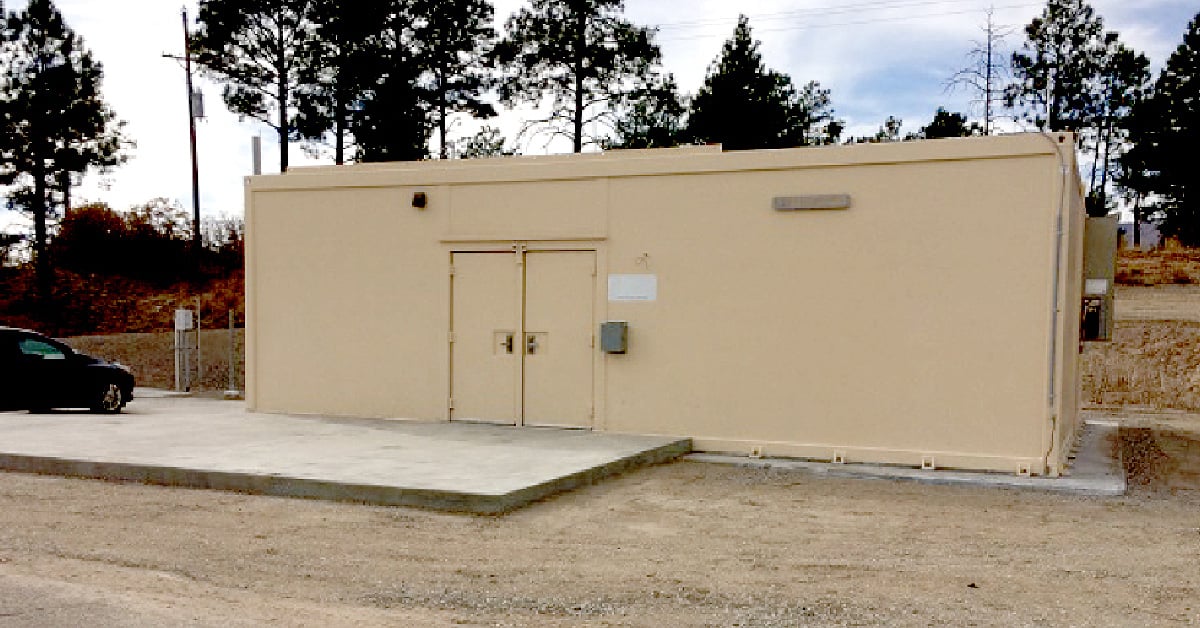
For large, complex government and military projects, steel modular buildings are the ideal solution. They are a popular choice for these projects due to their quick construction, versatility, and durability.
This combination makes them cost-effective and more flexible than traditional construction methods. Let’s take a closer look at the benefits of using steel modular buildings for government and military projects and the range of possible applications, like temporary or permanent housing, offices, data centers, training facilities, access points, and storage facilities. It’s even possible to implement them when the extra protection of blast resistance, ballistic resistance, or protection from forced entry is needed.
One of the primary benefits of modular buildings is their quick construction time. These structures are typically prefabricated off-site and can be assembled on-site in a matter of days or weeks, depending on the size and complexity of the project. This reduces labor costs and allows for faster completion of the project. Also, because the work is done in a controlled factory setting, this allows the manufacturer to monitor the production, assess the quality, and speed up the construction time when necessary and possible. And, one of the biggest reasons that modular makes sense for military projects is that their modular nature, which makes them mobile, allows them to be classified as "operations and maintenance" projects, rather than "military construction." This simple difference means the whole project can often be completed in the time it takes for a MILCON project to be approved.
All of this is done without disrupting work on an installation site during production. On a military site, since security and logistics can be a concern, offsite production is an option that allows secure work to continue without the disruptions that happen when security protocols must be observed during the delivery and production of an onsite project. In fact, access points used to secure worksites can even be modular.
Modular steel buildings can also be customized to meet the specific needs of a government or military project, which can further reduce construction times. For example, modular buildings are designed with prefabricated components that are specifically sized and shaped to fit together seamlessly, which means the assembly process can be completed more efficiently. Usually, modular units arrive with preinstalled plumbing fixtures, electrical systems, HVAC systems, and more. Installation is simple and involves joining and securing the units and “plugging in” the preinstalled services.
Modular buildings are also highly versatile and can be designed to meet a variety of different needs. This allows for more efficient use of resources and reduces the need for multiple specialized structures. For example, a single modular building can be configured to serve as both a housing unit and an office, or it can be outfitted with specialized equipment for use in a laboratory or workshops.
This versatility can also mean easy customization to meet specific project requirements. Things like fire suppression systems, air filtration, and much more can be incorporated into the modular designs, while other options, like blast resistance, ballistic resistance, or protection from forced entry, might be part of the original design. With the right design or modifications, these structures can be transformed into office spaces or command centers and beyond, depending on the needs of the project at hand.
In addition to their versatility, modular buildings, when constructed of steel, are also highly durable and are designed to withstand harsh weather and other environmental conditions. This increases their lifespan and reduces maintenance and repair costs over time.
High-quality steel makes modular buildings resistant to extreme temperatures, moisture damage, pests, and other environmental factors that can cause traditional construction materials to deteriorate over time. This makes them an ideal choice for government and military projects where long-term reliability is essential. Plus, the fact that these structures can be easily disassembled and relocated means that they can be reused for future projects as needed.
There are numerous examples of successful deployment of modular buildings in government and military projects. One such example is the use of modular buildings by the United States Military to create temporary housing for soldiers. These structures provide a comfortable and secure living environment in any environment, at a fraction of the cost of traditional construction methods.
Another example is the use of modular buildings by the Federal Emergency Management Agency (FEMA) in disaster response and recovery efforts. Modular buildings can also be used to provide temporary housing, offices, and other facilities in the aftermath of natural disasters such as hurricanes and earthquakes. These structures are quickly assembled and provide a cost-effective solution for meeting the immediate needs of affected communities.
In addition to their use in temporary housing and emergency response efforts, modular buildings have also been used in a variety of other government and military projects. These include office buildings, storage facilities, and training centers. In all these cases, modular buildings provide a cost-effective solution that met the specific needs of the project.
The advantages of using steel modular buildings for government and military projects are numerous—from their affordability and durability to their adaptability and ease of installation—making them an attractive option for any organization looking for an efficient solution without sacrificing quality or performance standards.
If you're considering utilizing steel modular buildings for your next project, contact CoverSix today. We can assess your needs and help you with a modular design project that will allow you to get the most out of your investment. Take a look at some of our projects: